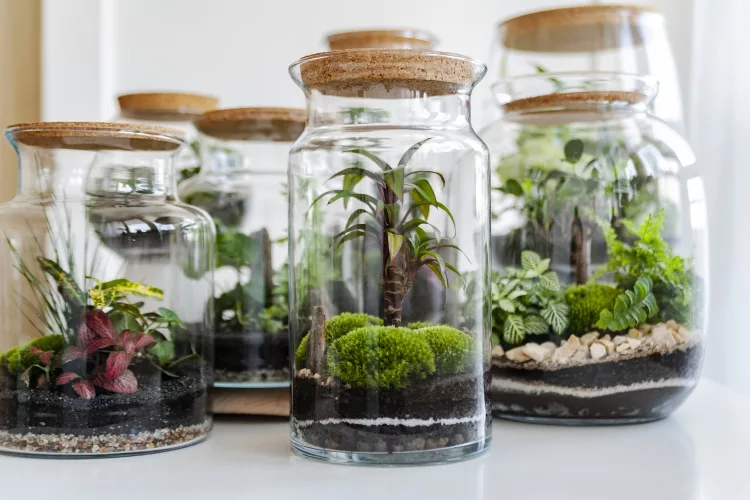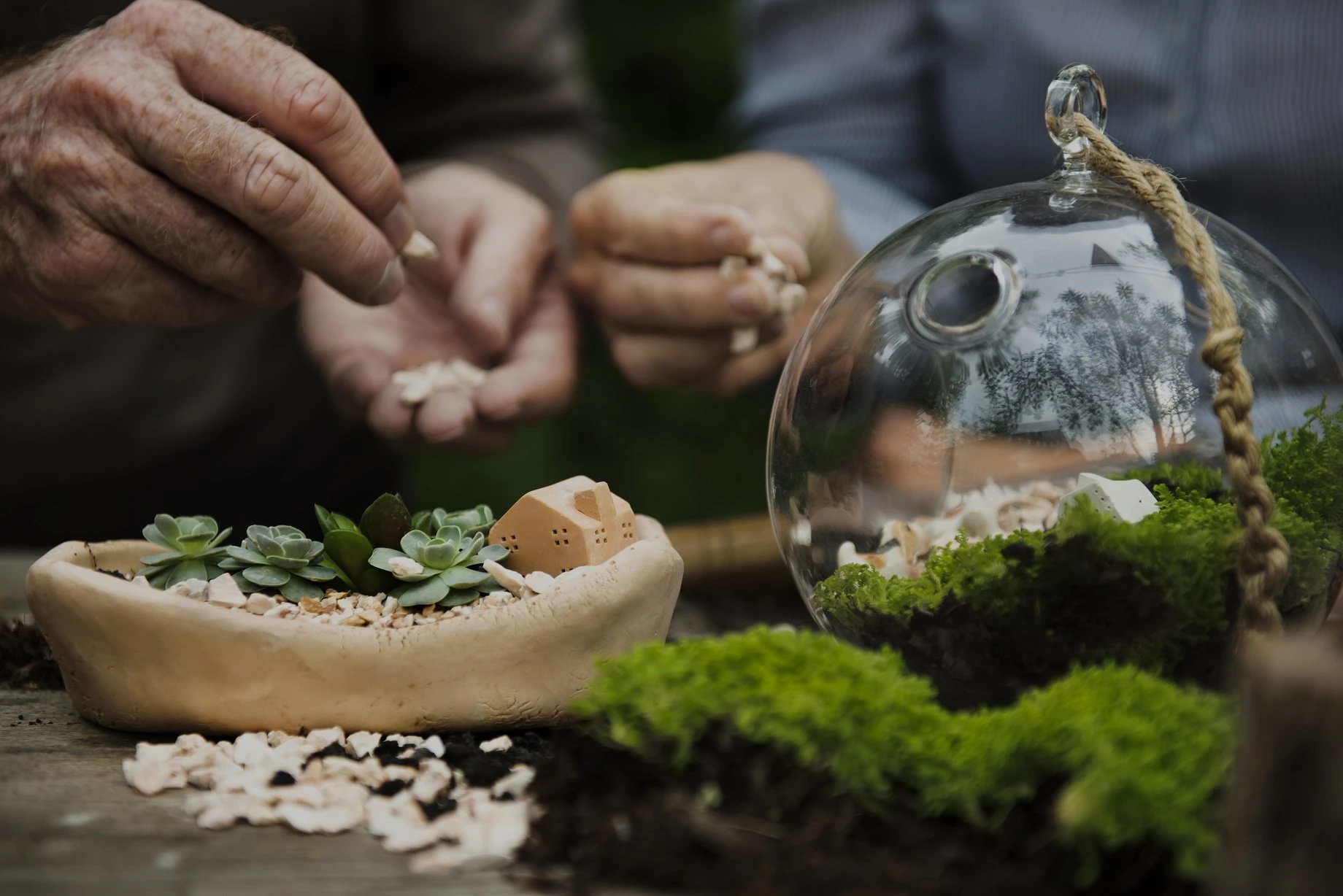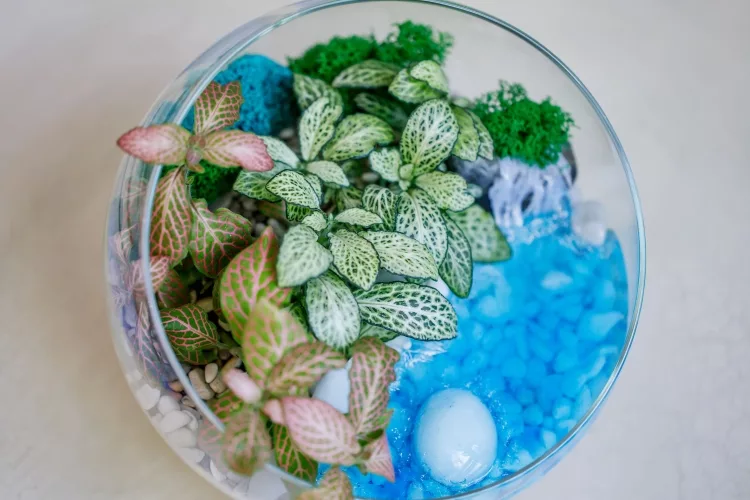reviewed by Christina Lopez
You may be wondering, what is a terrarium? Well, it is a miniature garden within a sealable container such as a jar or bottle. People mostly use transparent plastic or glass containers. You can opt to have the open terrarium that does not have a lead or the closed terrarium whose lid you can remove at any time. If you are a person who loves to garden, but you have little to no garden space where you live, the terrarium could be an exciting project. It could also work for busy schedules and therefore only deal with plants requiring little maintenance. The terrarium can also be a décor for your house. Plants give a house a homey feeling. So how then does a terrarium work? The closed and open terrarium has a slight difference in how they work
Contents

It looks like an enclosed ecosystem. The sun creates warmth within the container, making moisture evaporate from the soil and plants. The moisture then condenses on the cool parts of the container. That water falls back into the soil, creating a water cycle, and the process continues. Nutrients come from the soil in the container. As the plants are growing, they use the nutrients, and when they die, the nutrients go back to the soil.
The closed terrarium needs a lot of light, so the recommended place to put it is a bright spot that does not receive direct sunlight. That will prevent overheating. The walls magnify the direct sunlight for the glass containers, thus trapping excess heat that leads to overheating. Avoid keeping the containers close to radiators or other sources of heat also to avoid overheating. Light is also important for photosynthesis. Through that process, the leaves make food for the plants.
Watering is not necessary for a closed terrarium. However, if you notice that the plants are wilting or that the soil is parched, you need to water immediately. Remember that the container does not have holes at the bottom, so there is nowhere for the water to go if you overwater. The best watering practice is to use a spray bottle for large terrariums or misting bottles for the small ones. For the closed terrarium, excess moisture is a great enemy.
When there are large droplets on the container walls due to condensation, there is a lot of moisture. You need to remove the lid and place the container in a location with plenty of light and airflow. That will ensure that the excess water dries adequately. It is vital to note that a well-functioning terrarium must have moisture on its walls. If the walls are clear, place your finger on the plants or the soil, and if they are both dry, you can water them.

The open terrarium could be a good start for a person who has never taken part in a closed terrarium project. That is because, for the open terrariums, there are fewer factors to consider. Such terrariums have become popular house décor pieces.
The good thing about them is that there are fewer chances of having mold or rotting plants, fewer condensation problems, and better air circulation. That means that the open terrariums are, in most cases, more successful.
The downside is that you will prune or trim more often because the air circulation helps the plants grow quicker than the closed terrariums.
The open terrariums do not have a water cycle like the closed terrariums because they expose the environment. You, therefore, have to water them regularly or when you notice that the soil is too dry or the plants are wilting.

Understanding the layers is important if you decide to build your terrarium. The various components in the different layers have their functions.
The first layer that is the layer at the bottom should have rocks. The rocks promote drainage. That is especially for the closed terrariums. That means your plants are free from waterlogging.
The next layer is the charcoal layer that helps to purify the water.
The next layer is the substrate or the potting soil. Use soil that has good drainage and aeration to promote the growth of your plants. For the succulents, you could add some sand to the soil. It promotes drainage.
You could have a final layer of decorative items such as shells, pine cones, and small stones.
The tropical plants like humidity and moisture do well in the closed terrariums, while the succulents prefer the drier conditions in the open terrariums. Examples of succulents are gasteria, dwarf aloe, sedum, dwarf jade, cacti, crassula, and aeonium.
Ferns, moss, Ivies, miniature orchids, begonias, and carnivorous plants do well in the closed terrariums. Examples of ferns are Birds nest, Maidenhair, and Button. Some carnivorous plants are Pitcher, Venus flytrap, and Sundew.
The closed terrarium may require a lot of trial and error because you need to adjust various aspects such as moisture. You might have a few fails, especially if you are a beginner in gardening. The important thing is to have fun and keep learning through each mistake and success.
It is necessary to understand the requirements of the different kinds of plants that you want to grow in each terrarium—for example, the amount of light per day, the drainage, humidity levels, and the temperature. For beginners, it would be better to stick to a single variety and later progress to mixing them up.
The terrariums are very easy to maintain. It is the right time to get yourself one. Make it as simple or complex as you like.
 |
 |
 |
 |

About Christina Lopez
Christina Lopez grew up in the scenic city of Mountain View, California. For eighteen ascetic years, she refrained from eating meat until she discovered the exquisite delicacy of chicken thighs. Christina is a city finalist competitive pingpong player, an ocean diver, and an ex-pat in England and Japan. Currently, she is a computer science doctoral student. Christina writes late at night; most of her daytime is spent enchanting her magical herb garden.
 |
 |
 |
 |
Get new FREE Gifts. Or latest free growing e-books from our latest works.
Disable Ad block to reveal all the links. Once done, hit a button below
 |
 |
 |
 |